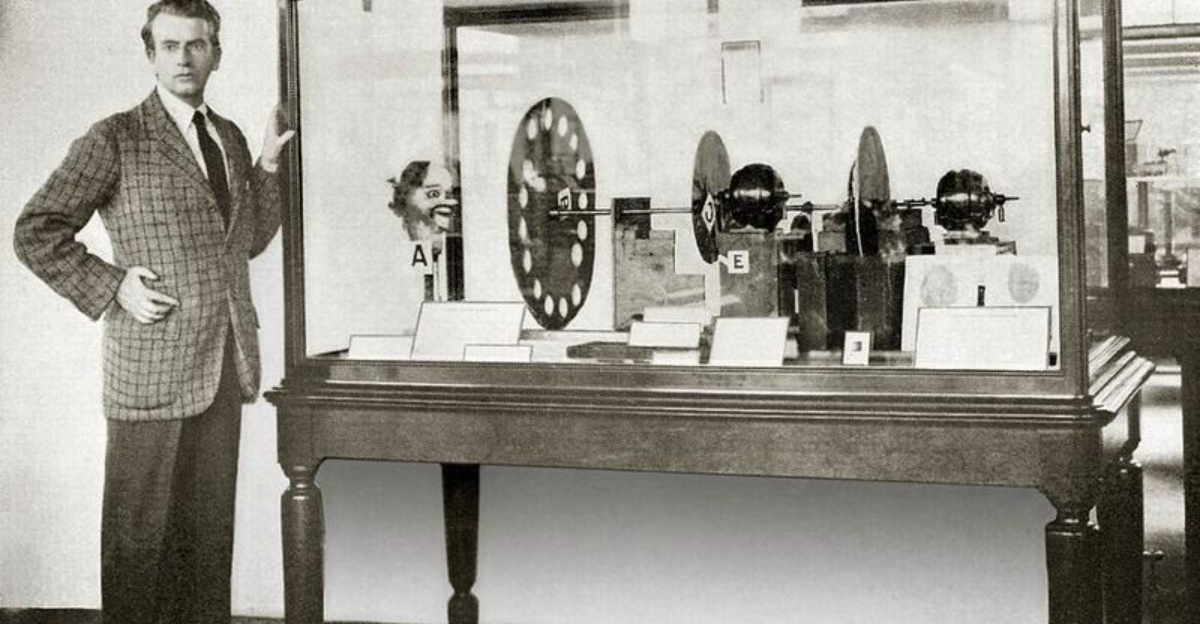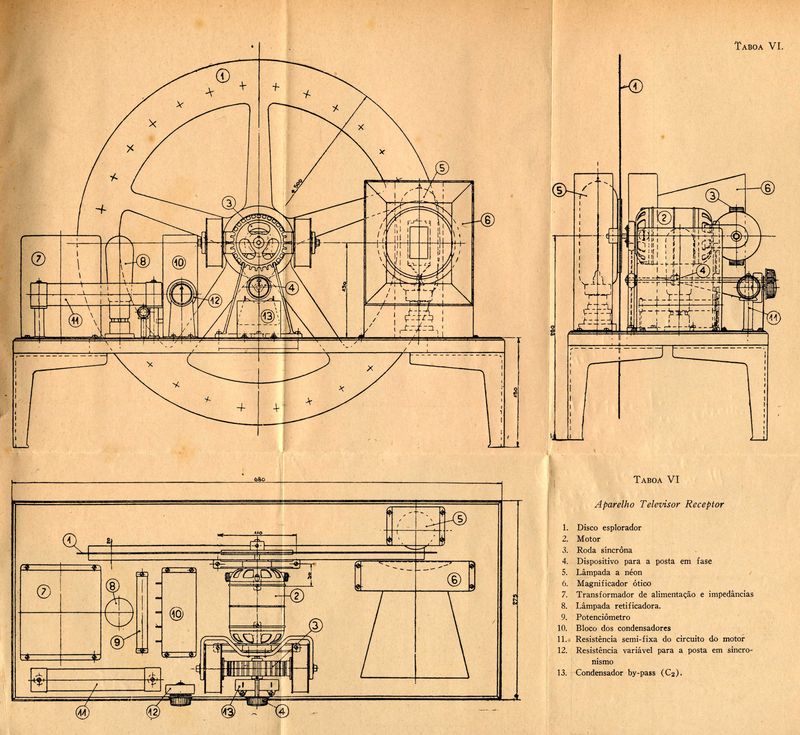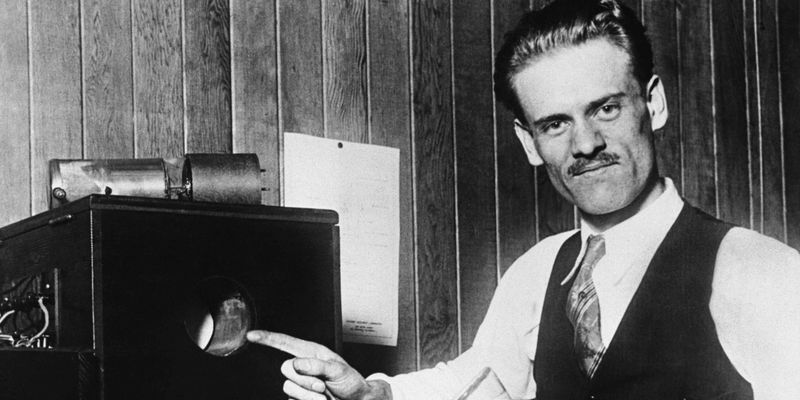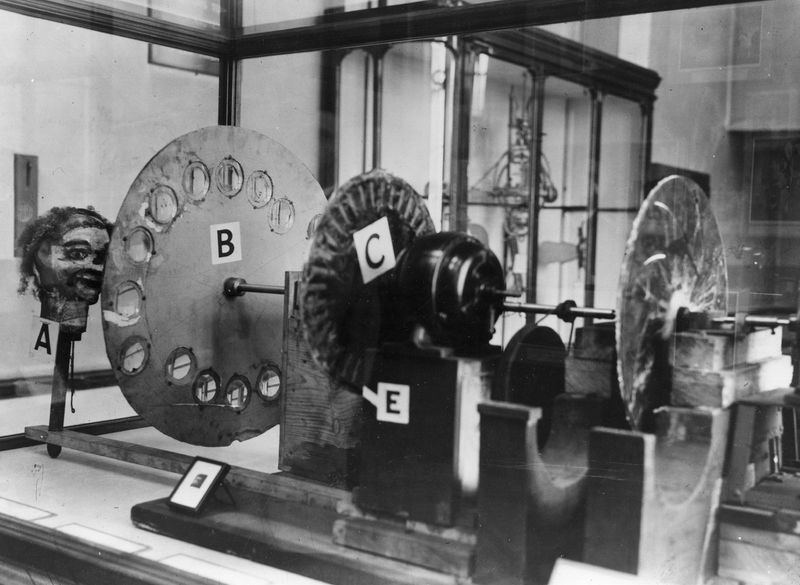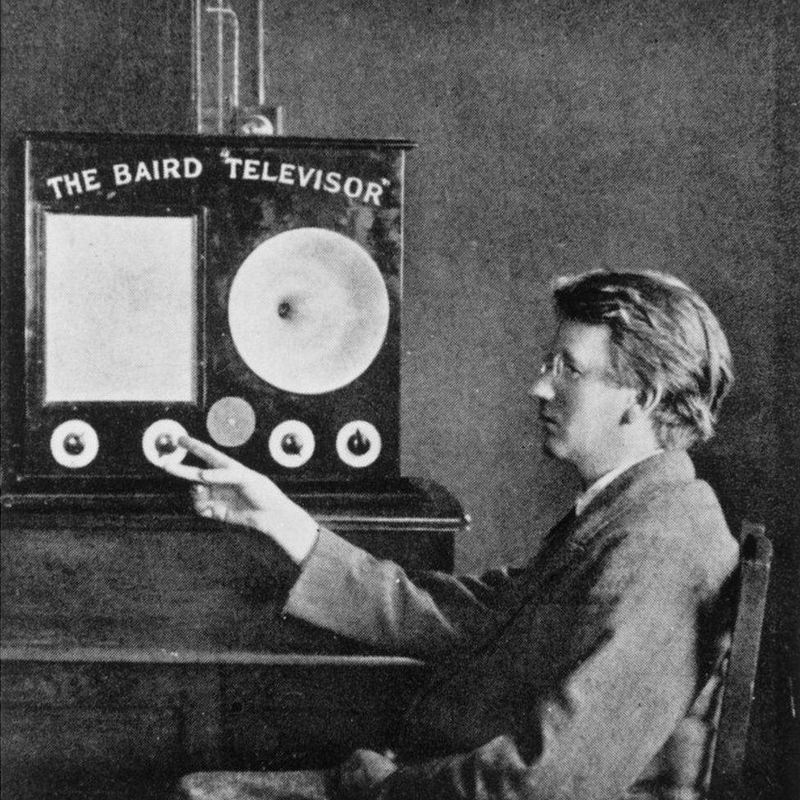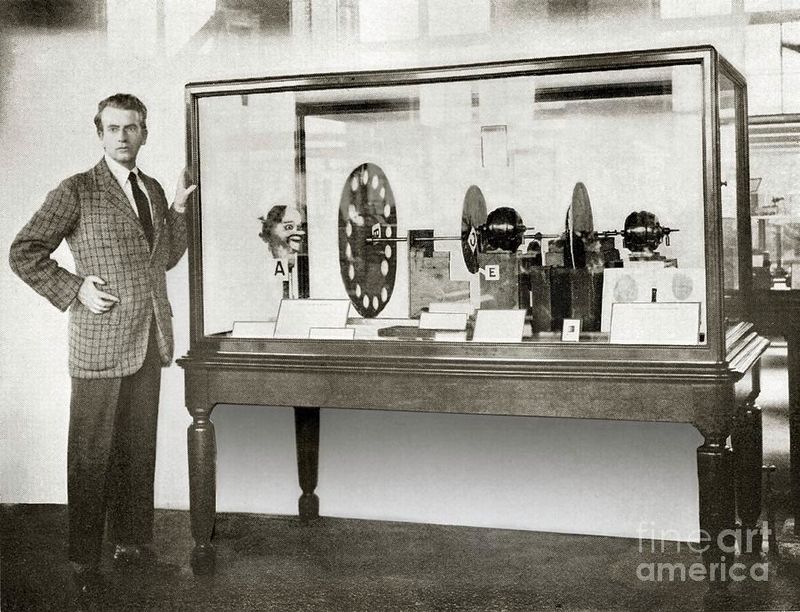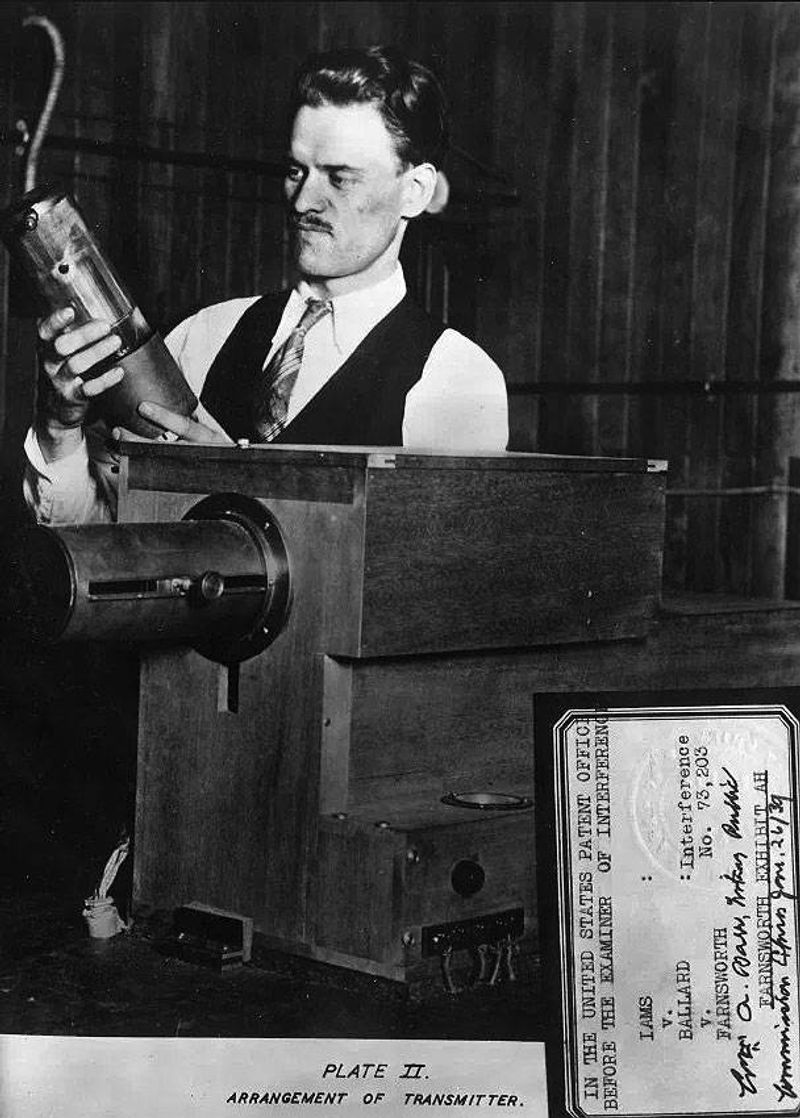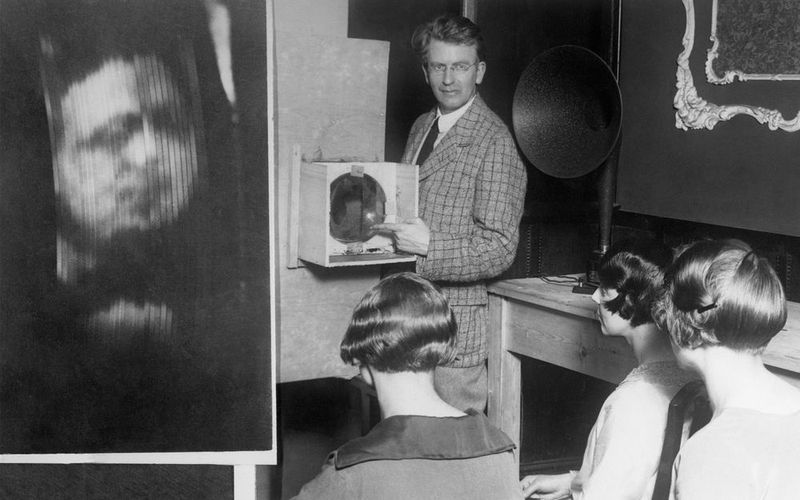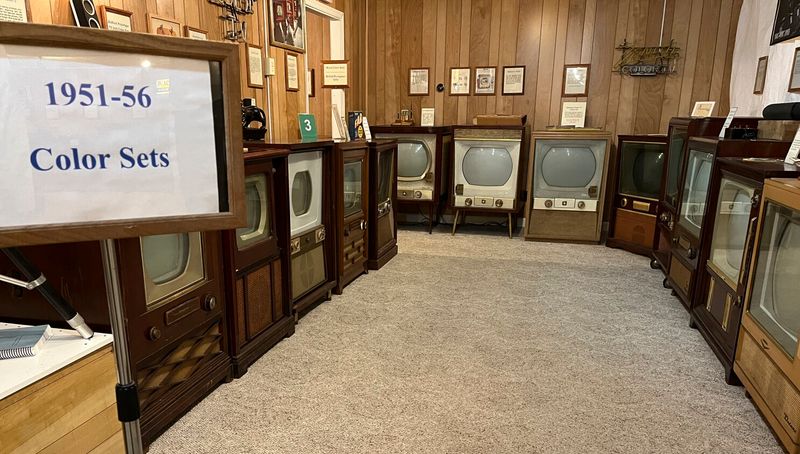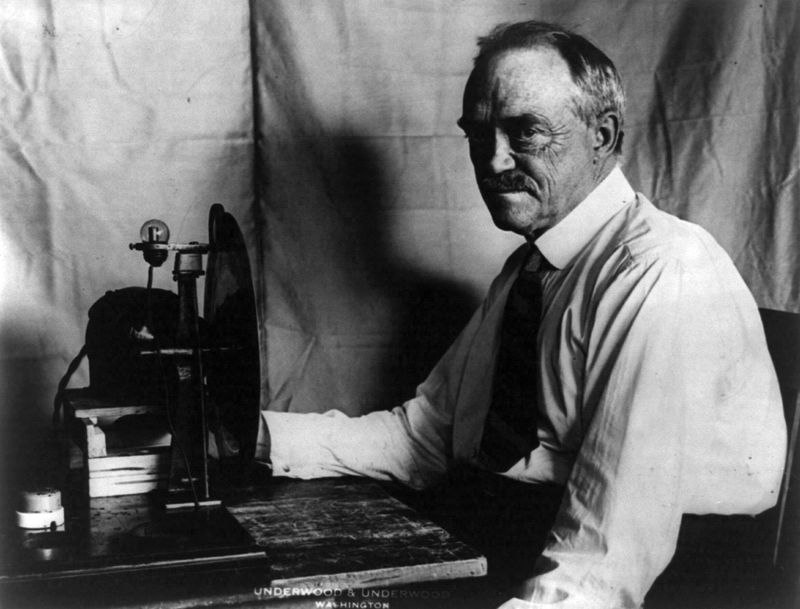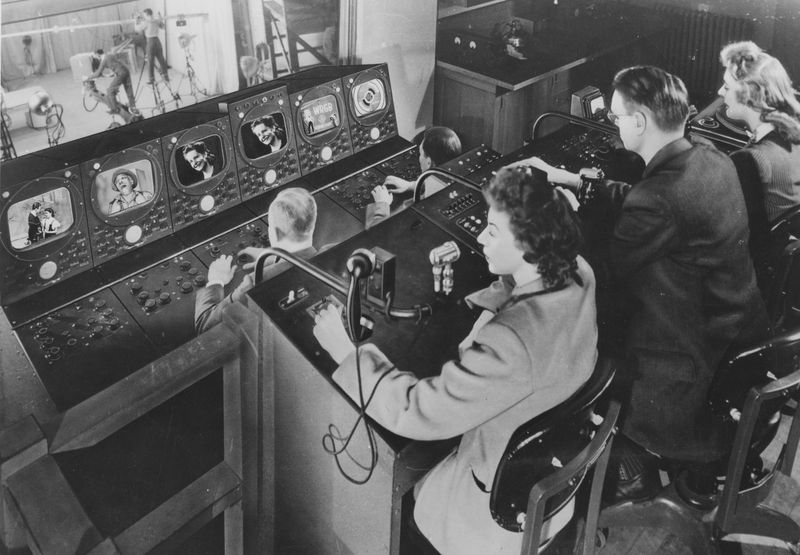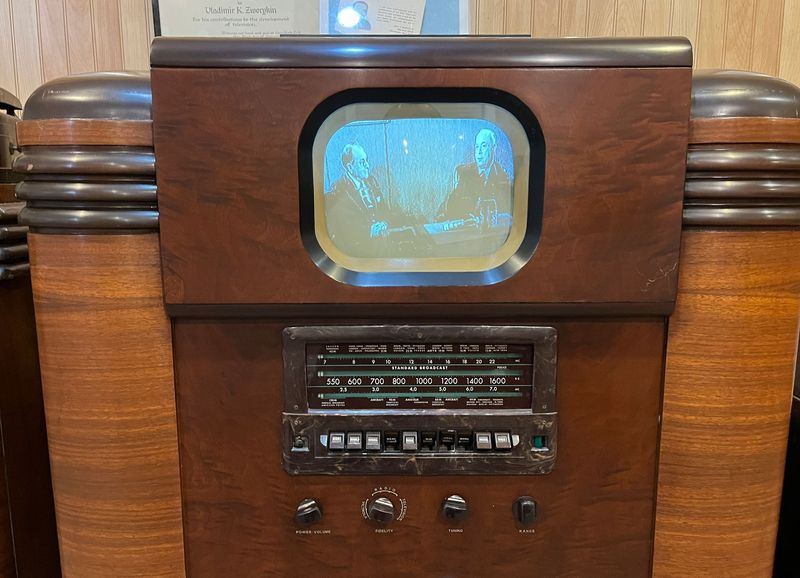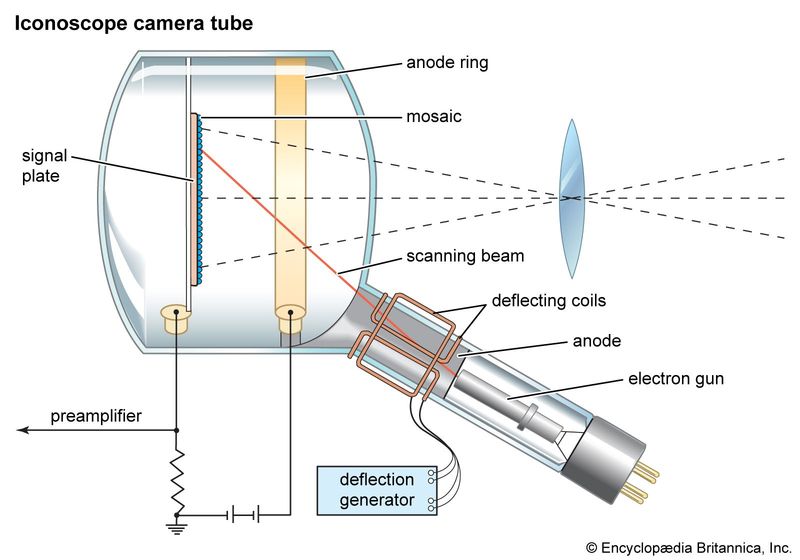Television has become a staple in modern households, but few know the captivating history behind its inception. From early mechanical systems to electronic breakthroughs, the 1920s set the stage for television’s evolution. Dive into these fascinating facts to discover the pioneers, technological challenges, and creative solutions that shaped the TV magic we know today. Each of these 15 facts unveils a unique piece of the puzzle that brought television from a dream to reality, highlighting the inventors, innovations, and intriguing tales of invention that forever changed the way we see the world.
1. The First TV Concept Was Imagined in the 19th Century
In the late 1800s, the concept of transmitting images was merely a twinkle in inventors’ eyes. Paul Nipkow, a German inventor, proposed the Nipkow disk in 1884, which became the cornerstone of early television technology. Imagine a simple rotating disk that could scan images and translate them into electrical signals.
Nipkow’s invention laid the groundwork for future mechanical television systems. Although rudimentary, this innovation was a leap toward seeing images from afar, sparking a wave of invention that would continue into the 20th century. It’s amazing how a humble disk could inspire such a technological revolution!
2. Television Means “Far Seeing”
The term “television” is a blend of Greek and Latin roots, translating to “far seeing.” This linguistic blend perfectly encapsulates the essence of TV—bringing distant images into our homes. It’s fascinating how a single word can convey such a powerful concept.
As early inventors grappled with the technical challenges of transmitting images, the name ‘television’ seemed a fitting tribute to their efforts. This term captures the wonder and ambition behind the technology, reminding us of the magic of seeing far beyond our physical reach. Language and innovation come together in this fitting name.
3. Mechanical TV Came Before Electronic TV
Before the sleek electronic screens we know today, television began its journey as a mechanical marvel. Early systems utilized mechanical scanning devices like the Nipkow disk to capture and display images. These contraptions spun rapidly, scanning images line by line.
Despite their limitations, mechanical TVs were a vital step toward modern television. Their rudimentary screens flickered with tiny, blurry images, but they represented a significant leap in technology. These early sets paved the way for electronic innovations, proving that even the simplest machines can lead to groundbreaking advancements.
4. John Logie Baird Is Often Called the “Father of Television”
John Logie Baird, a Scottish inventor, is often dubbed the “Father of Television” for his groundbreaking work in the 1920s. He demonstrated the first public showing of live television in 1926, capturing the world’s imagination.
Baird’s work was pivotal, but he wasn’t alone. Many inventors contributed to television’s evolution, making it a collaborative achievement. Nonetheless, Baird’s ingenuity and perseverance earned him a place in history. His work laid the foundation for what would become a global phenomenon, illustrating the power of vision and innovation.
5. Philo Farnsworth Was Just a Teenager
Philo Farnsworth’s story is one of youthful genius. At just 14, he conceived the idea of an all-electronic television system, a concept beyond its time. His vision was revolutionary, setting the stage for developments that would transform media.
By 1927, Farnsworth had built the first working prototype, ushering in a new era of electronic television. His teenage sketches became the blueprint for future innovations, highlighting how youthful curiosity can lead to monumental discoveries. Farnsworth’s journey from farm boy to inventor is a testament to the power of imagination and determination.
6. Baird’s TV Used a Nipkow Disk
John Logie Baird’s early television system relied on the ingenious, yet simple, Nipkow disk. This rotating disk was essential for scanning images, translating them into signals that could be broadcast and viewed remotely.
While primitive, the Nipkow disk was revolutionary at the time. It allowed Baird to transmit moving images, a feat that seemed impossible before. The disk’s contribution to television technology underscores how rudimentary innovations can sometimes lead to extraordinary breakthroughs, bridging the gap between mechanical and electronic eras.
7. The First Televised Image Was a Ventriloquist’s Dummy
Meet Stooky Bill, the wooden dummy that became a television pioneer! In the 1920s, capturing live human faces on TV was tricky due to low contrast. Baird used Stooky Bill to test his transmissions because its stark features suited the technology.
This quirky choice highlights the creative solutions inventors employed to overcome technical hurdles. Stooky Bill’s televised debut marked a significant milestone, showing that even inanimate objects could play a pivotal role in technological history, bringing us closer to live broadcasts as we know them today.
8. Farnsworth Made His Breakthrough in 1927
In September 1927, Philo Farnsworth achieved a monumental breakthrough by transmitting the first electronic television image—a simple straight line. This experiment marked the dawn of electronic television, moving away from mechanical systems.
Farnsworth’s focus on electronic solutions solved many limitations of previous technologies, setting a new standard in the industry. His work demonstrated the potential of electronic television to deliver clearer images, paving the way for advancements that would define modern broadcasting. Farnsworth’s success was a turning point, illustrating the power of perseverance and innovation.
9. Baird Also Developed Color TV Prototypes
John Logie Baird didn’t stop at black-and-white images; he ventured into color television. By 1928, he demonstrated a mechanical color TV system using spinning disks with filters. This innovation was a vibrant leap forward, adding a new dimension to television.
Baird’s experiments in color paved the way for future developments, showing his forward-thinking approach. Although primitive compared to today’s standards, these prototypes highlighted the potential for more lifelike broadcasts. Baird’s colorful vision inspired generations of inventors, proving that creativity knows no bounds.
10. Baird Transmitted the First Live Human Image
In 1926, John Logie Baird achieved a significant milestone by transmitting the first recognizable moving image of a human face. Often credited to his office assistant, this achievement showcased television’s potential to bring people to screens everywhere.
Baird’s work was a pioneering step toward live broadcasts, transforming how we connect and communicate. His success demonstrated the power of human ingenuity and laid the foundation for the live television we enjoy today. It was a groundbreaking moment, capturing the imagination of audiences and inventors alike.
11. The Race Between the U.S. and Britain Was Fierce
The 1920s witnessed a fierce rivalry between Britain and the U.S. in television development. British inventors focused on mechanical systems, while Americans pursued electronic solutions. This competition drove innovation, pushing each side to their limits.
The race wasn’t just about technology; it was about national pride and the future of broadcasting. Each side sought to leave its mark on history, resulting in rapid advancements. This rivalry fueled creativity and laid the groundwork for the global television industry, proving that competition can be a powerful catalyst for progress.
12. Charles Francis Jenkins Broadcasted Silhouettes
Charles Francis Jenkins was a pioneer who experimented with broadcasting silhouettes in the early 1920s. His mechanical television system transmitted rudimentary images, a significant step forward in broadcast technology.
Jenkins’ work showcased the potential of television, even with its limitations. His silhouette broadcasts were a novel way to explore the medium, highlighting creativity in overcoming technical hurdles. Jenkins’ contributions were vital in laying the foundations for future advancements, illustrating how persistence in exploration can yield remarkable outcomes.
13. The First TV Station Was Experimental
WRGB in Schenectady, New York, initially called W2XB, was the first experimental television station. Starting in the late 1920s, it explored the possibilities of broadcasting, paving the way for modern TV stations.
WRGB’s experimental broadcasts were groundbreaking, revealing television’s potential to captivate audiences. This station represented a leap into the future, inspiring others to explore the medium’s possibilities. Its legacy is a testament to the pioneering spirit that drove television’s evolution, illustrating the importance of experimentation in technological advancement.
14. Early TVs Were Tiny and Unreliable
Early television screens were a far cry from today’s vast, vivid displays. In the late 1920s, screens were tiny, often compared to postage stamps, and their images were often blurry and unreliable.
Despite these limitations, early TVs were a marvel of their time, showcasing the potential of moving images in homes. These small, flickering screens provided a glimpse into the future of entertainment. Their development demonstrated that even imperfect technology could inspire wonder and curiosity, leading to the sophisticated systems we enjoy now.
15. The 1920s Set the Stage for the 1930s TV Boom
The 1920s were a decade of experimentation and innovation, setting the stage for the television boom of the 1930s. Inventors laid critical technical foundations, transforming TV from a novelty to a household staple.
As electronic systems improved, television began to capture the public’s imagination. The groundwork laid in the 1920s facilitated mass adoption in the following decades, illustrating how incremental progress can lead to widespread change. This era of innovation demonstrated the power of perseverance and how visionary ideas can shape the future.
